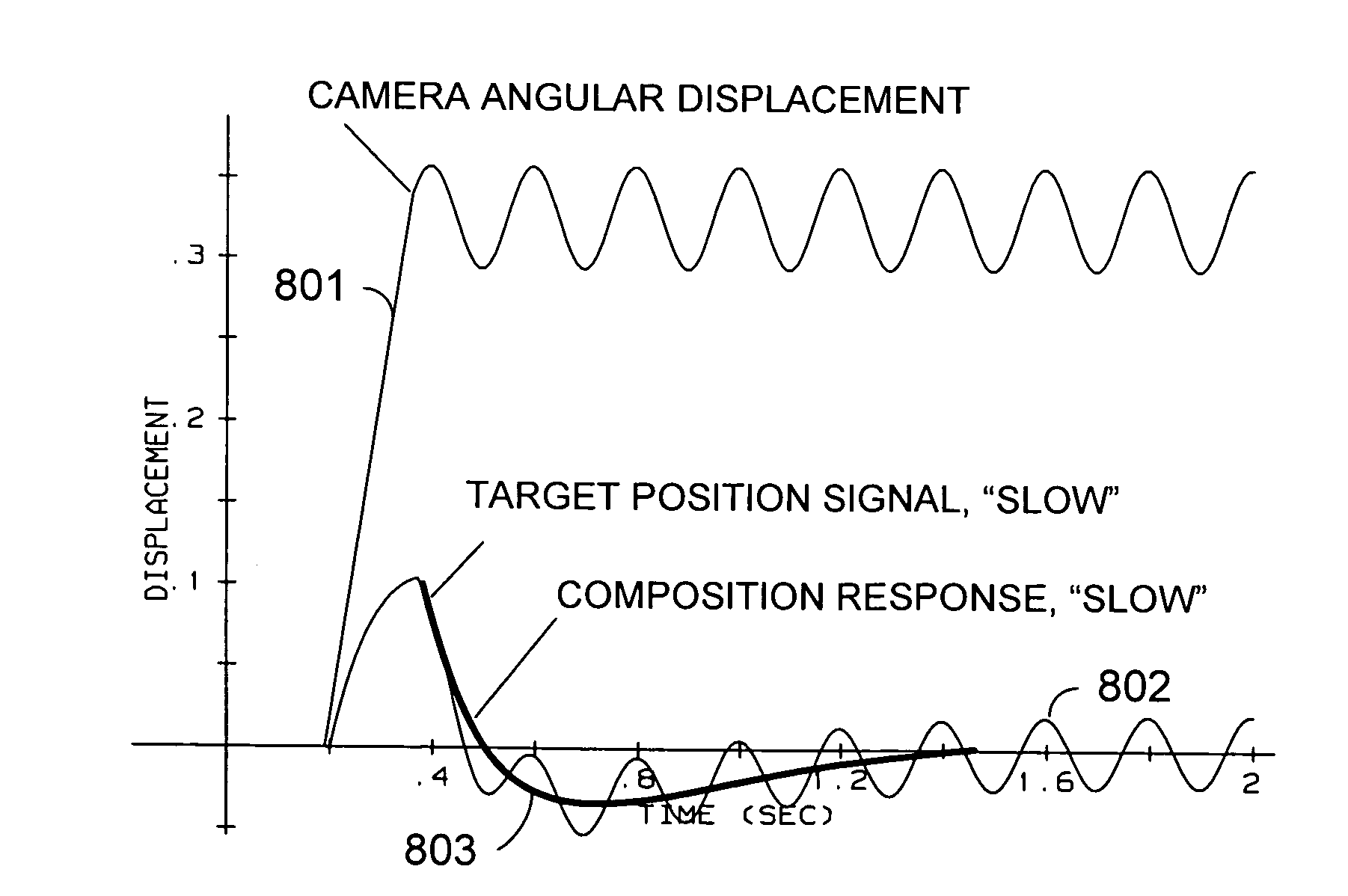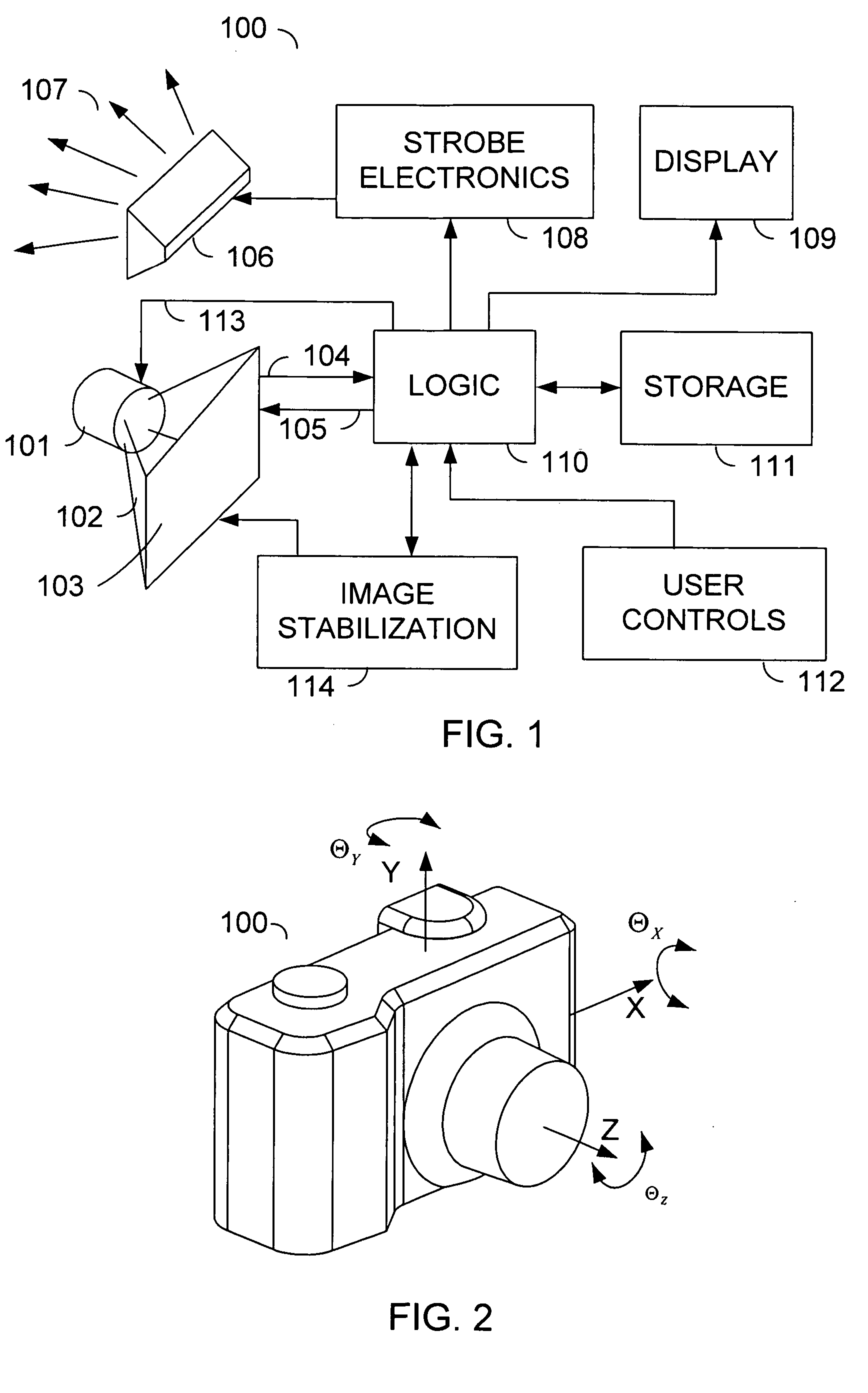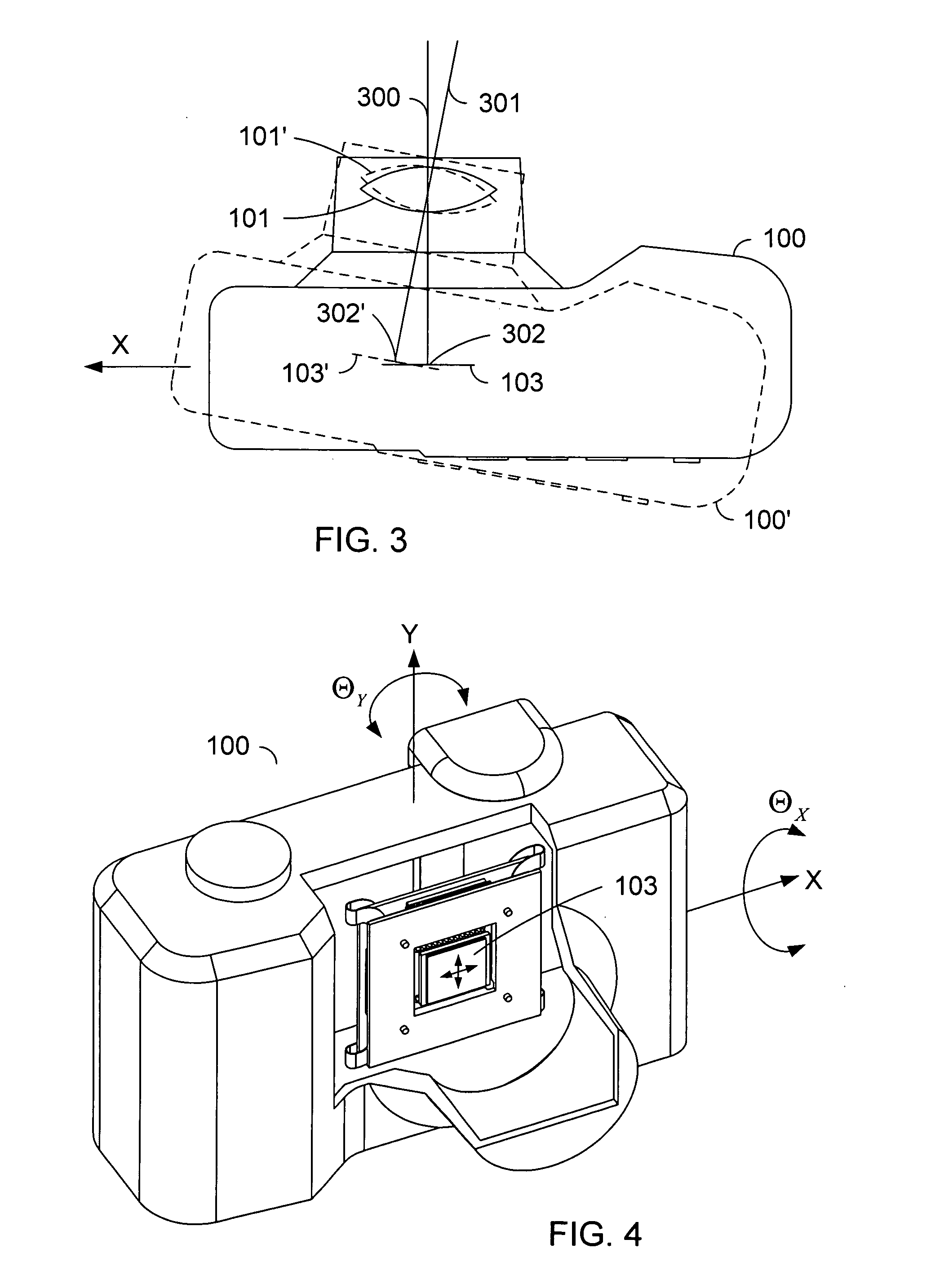Adaptive response image stabilization
a technology of image stabilization and adaptive response, which is applied in the field of photography, can solve the problems of camera shake becoming a limiting factor in the ability of photographers to take unblurred photographs, the inability to readily find or use a tripod in a particular photographic situation, and the blur caused by camera shak
- Summary
- Abstract
- Description
- Claims
- Application Information
AI Technical Summary
Problems solved by technology
Method used
Image
Examples
Embodiment Construction
[0028]FIG. 1 shows a simplified block diagram of a digital camera. A lens 101 gathers light emanating from a scene, and redirects the light 102 such that an image of the scene is projected onto an electronic array light sensor 103. Electronic array light sensor 103 may be an array of charge coupled devices, commonly called a “CCD array”, a “CCD sensor”, or simply a “CCD”. Alternatively, electronic array light sensor 103 may be an array of active pixels constructed using complementary metal oxide semiconductor technology. Such a sensor may be called an “active pixel array sensor”, a “CMOS sensor”, or another similar name. Other sensor technologies are possible. The light-sensitive elements on electronic array light sensor 103 are generally arranged in an ordered rectangular array, so that each element, or “pixel”, corresponds to a scene location.
[0029] Image data signals 104 are passed to logic 110. Logic 110 interprets the image data signals 104, converting them to a numerical repr...
PUM
 Login to View More
Login to View More Abstract
Description
Claims
Application Information
 Login to View More
Login to View More - R&D
- Intellectual Property
- Life Sciences
- Materials
- Tech Scout
- Unparalleled Data Quality
- Higher Quality Content
- 60% Fewer Hallucinations
Browse by: Latest US Patents, China's latest patents, Technical Efficacy Thesaurus, Application Domain, Technology Topic, Popular Technical Reports.
© 2025 PatSnap. All rights reserved.Legal|Privacy policy|Modern Slavery Act Transparency Statement|Sitemap|About US| Contact US: help@patsnap.com



